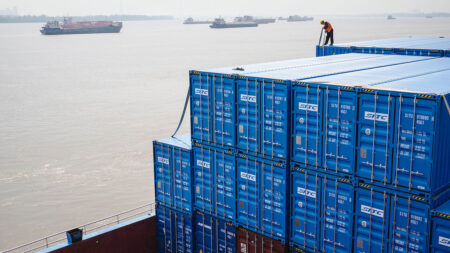In 1940, the European landscape underwent a seismic shift as Adolf Hitler’s forces invaded France, marking a turning point in World War II that left many nations grappling with fear and uncertainty. The invasion instilled a widespread dread regarding the potential collapse of Europe, along with its intricate economic frameworks that had taken decades to establish. However, not all reactions to this tumultuous period were steeped in despair, particularly not among the British investor community in London. Surprisingly, contrary to the prevailing bombshell of gloom, the British stock market demonstrated resilience during this dark chapter of history.
In that following year after the invasion, London’s financial district witnessed a remarkable phenomenon. While most individuals and organizations braced for economic strife and turmoil, the stock market started to ascend—an unexpected trajectory at a time fraught with pessimism and doubt. By the culmination of the hostilities, the value delivered by British companies to their shareholders amounted to an astounding 100% real return. This remarkable turnaround was emblematic of the spirited nature of these investors who, in the face of geopolitical upheaval, chose to believe in the economic fortitude of their nation and its enterprises.
Such unwavering faith in the face of chaos might have appeared irrational or reckless to some observers. Many contemporaries likely viewed these optimistic investors as mad, daring to engage in the stock market at a time when the specter of defeat loomed ominously over Europe. Yet, history often vindicates the contrarians, and as the war progressed, what seemed like folly turned out to be sagacious foresight. The tenacity of these British investors was not merely driven by blind optimism; rather, it reflected a calculated assessment of the potential for recovery and growth amidst the ruins of war.
The foundational principles of economic resilience were at play, and astute investors understood that, although the tumult of conflict brought with it significant challenges, such upheaval also presented unique opportunities. As factories transitioned to support wartime production, the British economy began to adapt and innovate, fostering avenues for profit. Furthermore, as the tide of war shifted, many of the companies engaged in defense manufacturing found themselves with government support and increased demand, bolstering their market valuations.
This juxtaposition of fear and opportunity characterized much of the economic discourse during the early years of the war. While traditional wisdom might dictate caution during periods of crisis, the dynamic environment fostered by wartime production unleashed a wave of entrepreneurial spirit and investment potential. Investors, often labeled as ‘plucky’ for their adventurous stance, capitalized on this environment, demonstrating that amidst uncertainty lay the seeds for remarkable growth.
As the war drew to a close and peace was gradually restored, the returns generated by British firms became a testament to the resilience of the market and the foresight of its participants. The dividends reaped by investors not only reaffirmed the strength of their convictions but also served as a beacon of hope for economic recovery across the continent. Looking back on those tumultuous years, it becomes clear that the actions taken by these investors were instrumental not only in their financial outcomes but also in shaping the narrative of resilience that would define post-war Europe.
Thus, the episode offers profound insights into the behavior of financial markets during periods of instability. The story reinforces the notion that opportunity often coexists with adversity, and those willing to navigate the tumult with astuteness can flourish. It stands as a powerful reminder of the complexity of economic ecosystems and the remarkable capacity for recovery that lies within them, even following periods of profound crisis.









